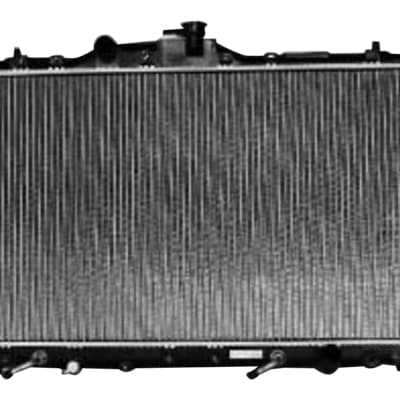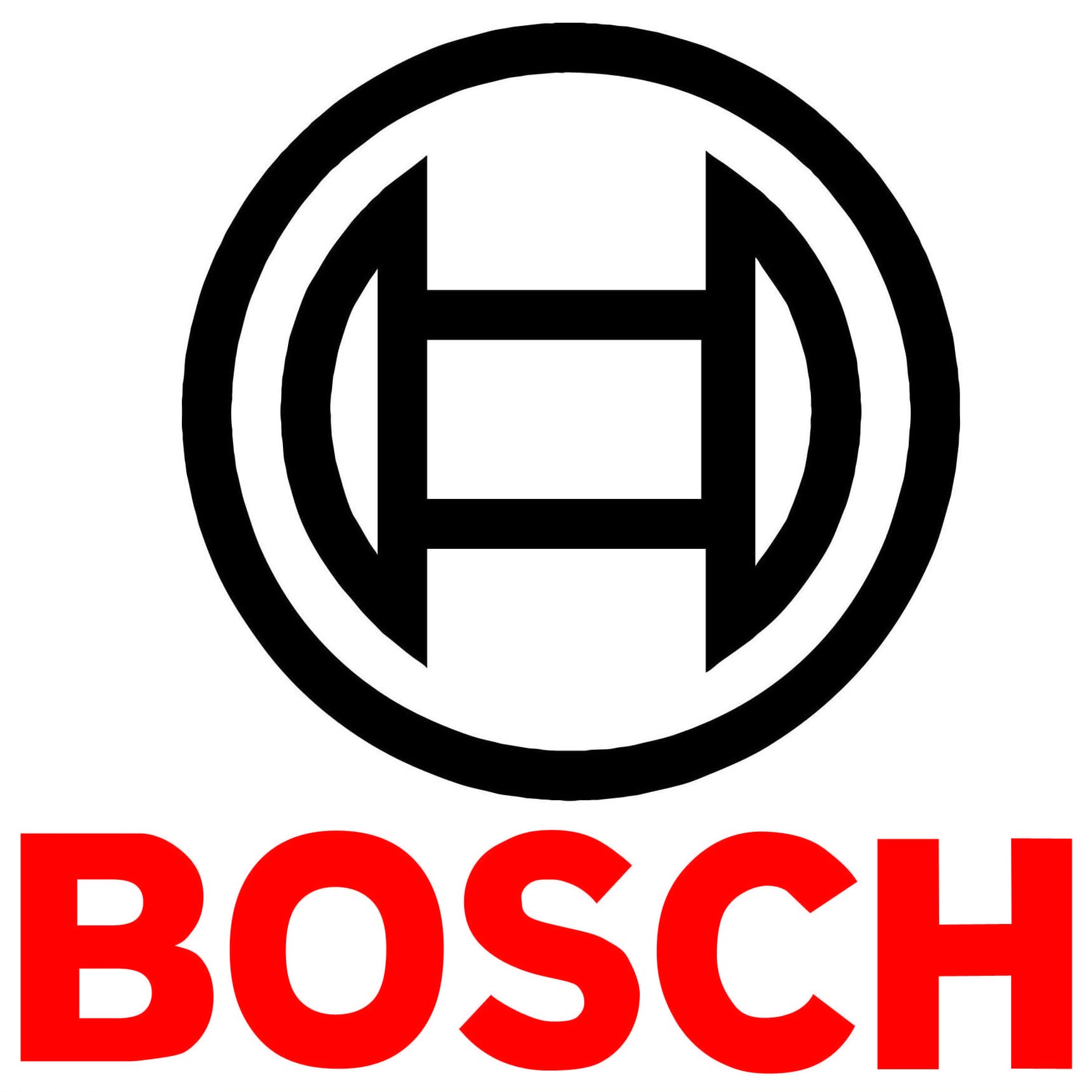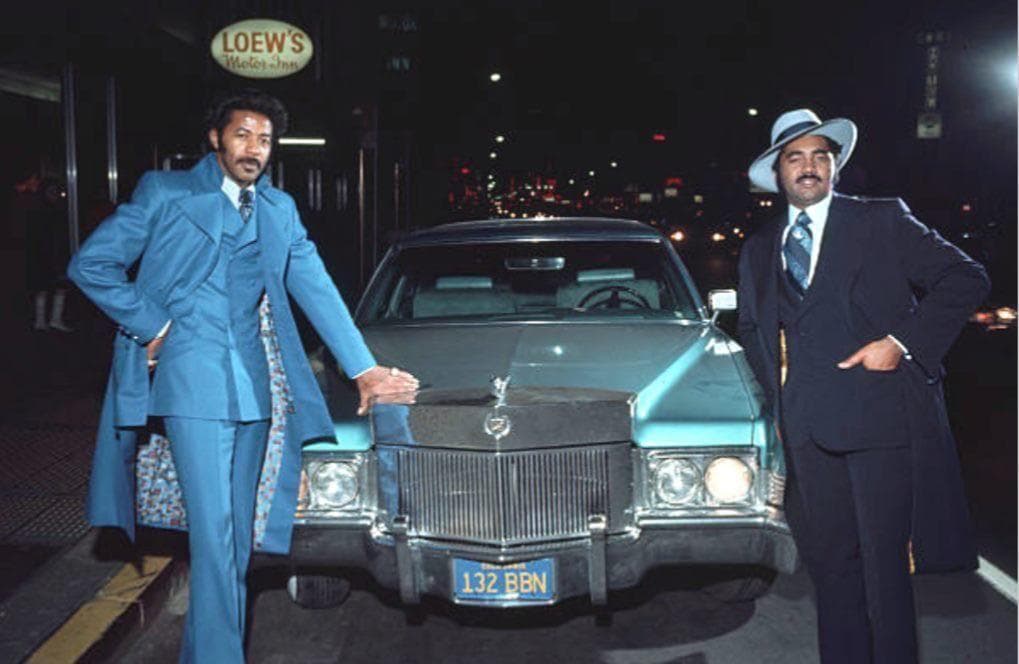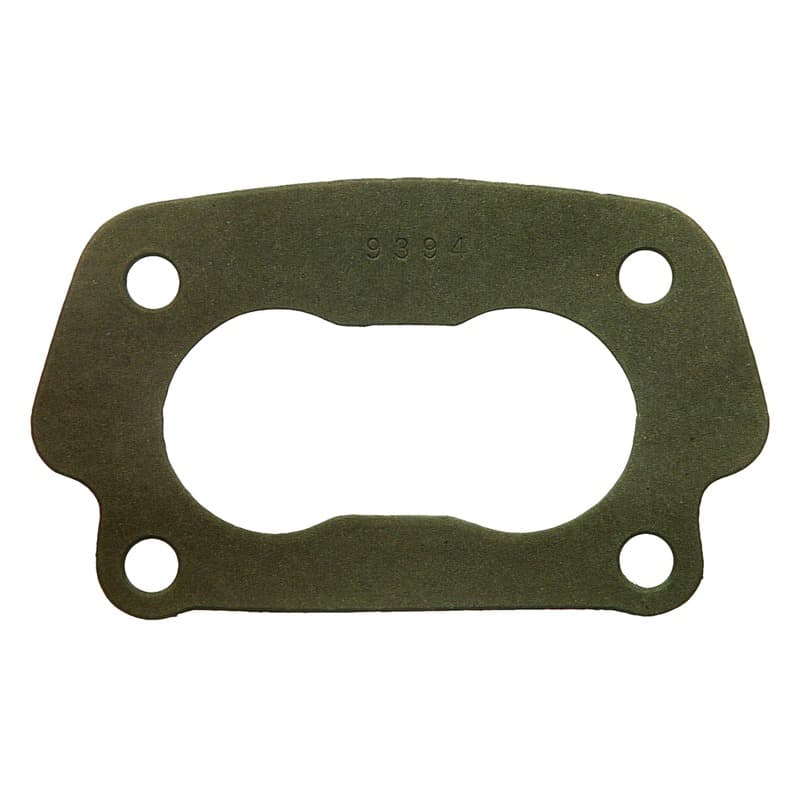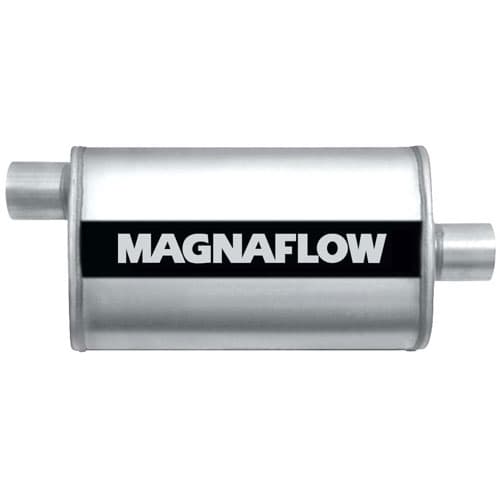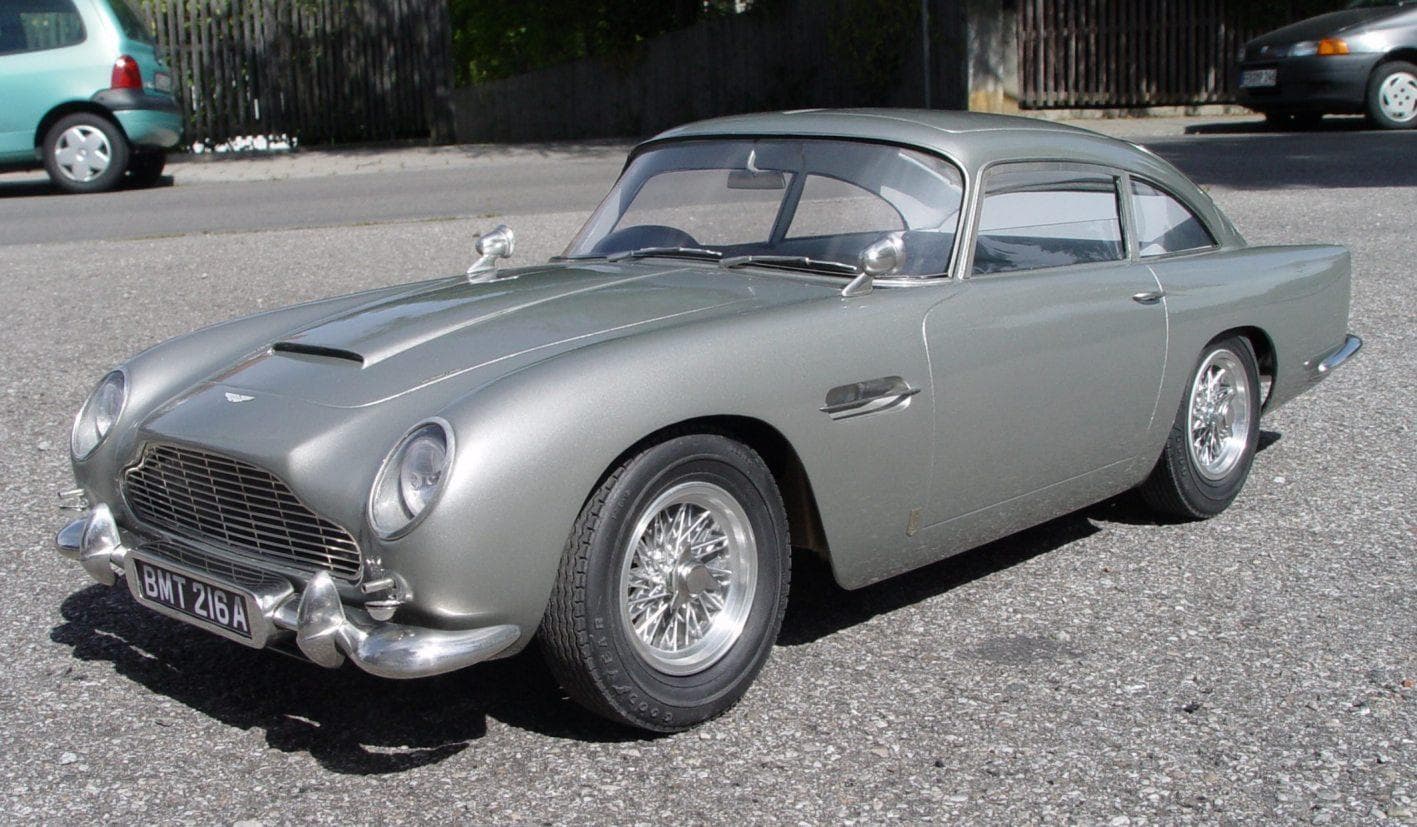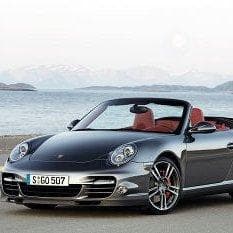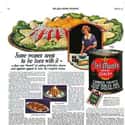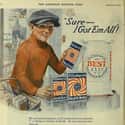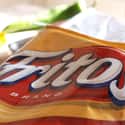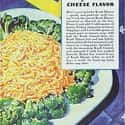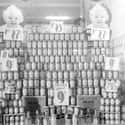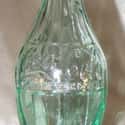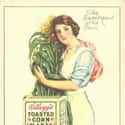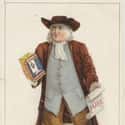-
(#1) Keebler Foods Company
- Brand/Company
Godfrey Keebler established his Philadelphia, PA, bakery in 1853. The German immigrant enlisted his sons into the business and, with continued success through regional distribution, merged with United Biscuit Company of America in either 1926 or 1927.
A move to keep up with competitor National Biscuit Company (Nabisco), this linked Keebler with fellow cookie, bread, and cracker makers, such as Streitmann (based in Cincinnati, OH). Keebler, one of several entities that formed the United Biscuit federation, transitioned to the corporate name for the entire body in 1966.
Keebler's cookies and crackers were baked in the decade preceding Abraham Lincoln's presidency, perhaps even making their way to Washington, DC. The election of 1860 was controversial, with Republican Lincoln running against Democrat Stephen Douglas. After the Democrats failed to agree on a candidate, however, a second member of the party, John Breckinridge, ran as a Southern Democrat against Constitutional Union Party candidate John Bell.
Lincoln's election prompted states in the American South to secede from the Union, fearful that their slavery-based livelihoods were destined to end under the new president. The American Civil War broke out the following year and, according to some sources, Keebler provided bread in the form of hardtack to the Union Army during the conflict.
-
(#2) Oscar Mayer
- Brand/Company
Oscar F. Mayer, an immigrant from Bavaria, came to the United States as a 14-year-old boy, settling in Detroit, MI, with his family. Mayer worked as a butcher from a young age, later relocating to Chicago, IL, where he transitioned to a role in retail. In 1883, Mayer and his brother, Gottfried, opened their Oscar F. Mayer & Bro. shop in Chicago, selling meat as a retail and wholesale commodity.
During the early 20th century, the Mayer brothers expanded, first purchasing a manufacturing plant in Madison, WI, and later branding their own meat products. The first yellow band was placed on Mayer meats in 1929.
Oscar Mayer wieners (the jingle didn't come out until 1963) were born the same year that Buffalo Bill's Wild West show kicked off in another section of the North American heartland. The show was founded in North Platte, NE, and William F. "Buffalo Bill" Cody launched what General William Tecumseh Sherman described as a "wonderfully realistic and historically reminiscent" show that brought the Wild West to life.
The "Wild West, Rocky Mountain, and Prairie Exhibition" premiered on July 4, 1883. During its 30-year run, it featured its namesake, the former Pony Express rider and Indian scout, alongside cowgirl Annie Oakley, Native American warriors, fast-roping horseback riders, and a host of other acts. The show re-created the American West while simultaneously romanticizing it for audiences around the country. It garnered international attention, even traveling to London to perform for Queen Victoria in 1887.
-
(#3) Tabasco sauce
- Food
As a product of the McIlhenny Company, Tabasco traces its origins to 1868. Edmund McIlhenny created what would become Tabasco Original Red Pepper Sauce from his home state of Louisiana, using the same recipe that remains popular today.
McIlhenny came up with a hot sauce that would add a kick to bland Southern food, incorporating seeds from a specific type of chili pepper - the capsicum frutescens. During the first year of production, McIlhenny sold just over 650 bottles of hot sauce, mostly to regional outlets along the Gulf Coast. He adopted the term "Tabasco," a Mexican Indian word that means either "place where the soil is humid" or "place of the coral or oyster shell." Two years later, McIlhenny got a patent for his Tabasco Sauce and soon expanded his product to markets across the US and abroad.
As McIlhenny set out on his business venture, the United States was similarly entering a new phase. In the aftermath of the American Civil War, former Confederate states slowly reentered the Union during the Reconstruction period. States were placed under martial law while they formed new governments. To rejoin the US, states had to meet several requirements, including acceptance of emancipation and ratification of the newly passed 14th and 15th Amendments. The latter extended citizenship protections and voting rights to African Americans.
Tennessee was the first former Confederate state to reenter the Union, brought back in on June 24, 1866. During 1868, seven states - Alabama, Arkansas, Florida, Georgia (later put back under federal control due to breaching the terms of reentry), Louisiana, North Carolina, and South Carolina - all returned to the United States.
-
(#4) Del Monte Foods
- Brand/Company
While the Del Monte brand is now associated with canned and packaged fruits and vegetables, the name Del Monte was first used on coffee in 1886. As a product of the Oakland Preserving Company in California, Del Monte coffee was made for the Hotel Del Monte in Monterey.
When a group of food producers in California combined to form the California Fruit Canners Association (CFCA) in 1899, the name Del Monte continued to be used, soon rising to the top of the group's premier brands. Del Monte was applied to products from the San Jose Fruit Packing Company and, after the California Packing Corporation joined the CFCA, used on their products as well.
As California's food producers were consolidating to meet consumer demand, drive down prices, and extend their influence in the market, Native American groups in the United States were at the end of their resistance to the federal government. After a lifetime of clashes with Mexican and American settlers alike, Apache warrior Geronimo surrendered to the US on September 4, 1886.
Geronimo, born in 1829 in present-day Arizona, had relocated to a reservation in 1874. Geronimo and his followers escaped, undertaking a series of raids and strikes on federal troops and non-native settlements. In March 1886, Geronimo surrendered for the first time, only to escape and remain on the run for a few more months. When Geronimo finally relented, he reportedly said, "We have not slept for six months and are worn out." Geronimo and his followers were sent to Florida, then Alabama, and finally Oklahoma, where the Apache leader passed on February 17, 1909.
-
(#5) Pillsbury Company
- Food Manufacturing
Pillsbury has origins reaching back as far as 1869 when it first produced flour from its mill in Minneapolis, MN. The company's founder, Charles A. Pillsbury, acquired more mills during the early 1870s, soon reorganizing his business to create C.A. Pillsbury and Company in 1872.
Pillsbury grew to dominate the flour market in the United States, in large part due to the incorporation of increasingly efficient grain elevator and steam-rolling technologies. In 1889, the Pillsbury-Washburn Flour Mills Company Ltd., took shape, consolidating flour manufacturing activities in Minnesota still further. Washburn was held by a British syndicate, however, allowing Pillsbury to expand internationally as well.
Jesse James, born in 1847, was well into his outlaw career by the late 1860s and early 1870s. James fought with Confederate guerilla troops during the American Civil War, staging his first bank holdup only one year after the conflict ended. With his brother Frank and a member of the James-Younger Gang, James held up trains, stages, and banks from Minnesota through Kentucky and into Mississippi.
James achieved folk hero status during his life, provoking fascination among journalists and the general public alike. His activities prompted Missouri Governor Thomas T. Crittenden to offer a large reward for Jesse and Frank James in 1881, to no avail. Jesse was shot by his associate, Robert Ford, in 1882.
-
(#6) Jell-O
- Food
Jell-O, as it's known today, is credited to Pearle Wait, a carpenter and self-taught apothecary of sorts from LeRoy, NY. Wait used gelatin to make raspberry, lemon, orange, and strawberry concoctions his wife, May, called Jell-O.
Wait sold his product to fellow entrepreneur Orator Woodward in 1899, who handed off manufacturing responsibilities to Andrew Sam Nico. Jell-O slowly became successful, sold by the Genesee Pure Food Company in increasing quantities during the first years of the 1910s.
Consumers may have had four flavor options when it came to Jell-O, but there were still limited resources for heating and lighting one's home. After years of experimentation in the United States and Europe, inventors came out with a light bulb that could burn for several hours in 1879, but channeling electricity to the masses would take decades. In 1882, Thomas Edison's Edison Electric Illuminating Company of New York helped light up areas of Manhattan, and, by 1925, about half of all American households had access to electricity.
-
(#7) Entenmann's
- Brand/Company
Founded in Brooklyn, NY, the first Entenmann's bakery was opened by William Entenmann in 1898. The German immigrant was born into baking, learning from his father before working in a bread factory in the United States. At his Brooklyn shop, Entenmann baked cakes, breads, and rolls, taking them to sell via horse-drawn wagon.
After his son became ill, the family moved to Bay Shore, Long Island, in 1900. William Jr. later took over for his father, helping the company thrive through the early 20th century. It wasn't until mid-century that Entenmann stopped making bread to focus on pastries instead.
While Entenmann was bringing baked goods to doorsteps in Brooklyn, the United States was in a conflict with Spain. When the US declared war on Spain on April 25, 1898, it was in support of Cuban and Filipino resistance to Spanish rule. At the time, Spain held Cuba, the Philippines, Puerto Rico, and numerous Micronesian islands as part of its waning empire. Another contributing factor was the explosion of the USS Maine in February of 1898. With 268 sailors having lost their lives on board, the explosion triggered already existing tensions between the two countries, with Americans blaming Spain for the blast.
After the formal declaration of war, the US undertook a three-month campaign in Latin America and the Pacific alike. Commodore George Dewey headed the naval fleet sent to Manila Bay in the Philippines, taking out its Spanish counterpart in about two hours. In the Caribbean, military troops and volunteers, including Theodore Roosevelt and the "Rough Riders," pushed the Spanish fleet out of Santiago Harbor, ultimately sending Admiral Pascual Cervera and his ships into the hands of the US Navy.
The conflict ended with the Treaty of Paris, signed in December 1898, which ceded Guam and Puerto Rico to the US. The US also became sovereign over the Philippines after paying Spain $20 million, and Spain gave up its claims on Cuba.
-
(#8) 1932 - Amelia Earhart Could Have Enjoyed Frito Corn Chips After Her First Solo Nonstop Flight Across The Atlantic
When Charles Elmer Doolin purchased what he needed to make corn chips from Gustavo Olguin in 1932, he opened up a market that would soon have nationwide appeal. Doolin began producing corn chips in San Antonio, TX, using factory methods comparable to those practiced by automobile manufacturers. First selling Fritos out of his car, Doolin's success caught the attention of Henry Lay, a potato chip manufacturer, during the mid-1940s.
Lay, first employed by Atlanta-based Barrett Foods in 1932, acquired the company five years later. He grew his H.W. Lay & Company, with locations in Atlanta, Memphis, and Nashville, to dominate the snack market in the southeastern United States during the 1940s and 1950s. Lay first sold popcorn, potato chips, and other snack foods and, when he entered into a cooperative business arrangement with Doolin in 1945, began to sell corn chips as well.
The companies founded by Doolin and Lay merged to become Frito-Lay in 1961, nearly three decades after Amelia Earhart became the first female aviator to make a solo flight across the Atlantic Ocean. Born in Kansas in 1897, Earhart moved around the Midwest with her family as a girl, later working at a Canadian military hospital during World War I. While there, she took an interest in aviation, entering into her first flying lesson under the guidance of female aviator Neta Snook in 1920.
By the late 1920s, Earhart was flying in air shows in the Boston area when pilot Hilton H. Railey asked her, "Would you like to fly the Atlantic?" Although she was in the passenger seat, Earhart became the first woman to make the flight from North America to the United Kingdom.
In 1932, she piloted her own trip from Newfoundland to Ireland amid poor weather and mechanical difficulties, earning international acclaim.
-
(#9) Kraft Foods
- Brand/Company
Kraft Foods, now merged with the H.J. Heinz Holding Corporation, began as a small dairy business in 1903. Canadian James L. Kraft and his brother Charles delivered cheese to local retailers, incorporating their enterprise in 1909. James, Charles, and two additional Kraft brothers honed a cheese process that prevented spoilage, ideal for military troops serving during World War I.
During the 1920s and 1930s, Kraft developed additional products, including Velveeta, Miracle Whip, Parkay margarine, and its highly recognizable macaroni and cheese. To maintain dominance of the cheese market in the United States, Kraft acquired Phenix Cheese Company as well, a joint company that was purchased by National Dairy Products Corporation in 1930.
Kraft cornered the processed cheese industry in a few short decades. In the same time period, the US focused its efforts on building a canal linking the Pacific and Atlantic Oceans across the Isthmus of Panama. During the late 19th century, the Isthmus was held by the Colombian government, which transferred control over to a private corporation in 1881. Financed by French investors, the corporate body set out to build a canal, a project headed by Count Ferdinand de Lesseps, who'd successfully facilitated the opening of the Suez Canal in 1869.
The logistics of building a canal in Panama proved too challenging for Lesseps and the French, and in 1902 US President Theodore Roosevelt purchased the French assets in the area for $40 million. Colombia resisted US presence, however, fearful it would lose hold over its territory. As a result, Roosevelt lent his support to the independence movement in Panama, recognizing it as a republic on November 6, 1903.
The US and Panama signed the Hay-Bunau-Varilla Treaty on November 18, giving the former control and ownership of the Panama Canal Zone.
-
(#10) 1869 - Carrier Pigeons Were Still Used When Heinz Was Founded
Founded by Henry John Heinz in 1869 near Pittsburgh, PA, the Heinz Company initially produced pickles, horseradish, and vinegars, expanding to "catsup" in 1876. The move to ketchup was achieved on the heels of Heinz filing for bankruptcy just one year earlier.
After the introduction of sweet pickles in 1876 as well, Heinz branched still further, offering his "57 Varieties" by 1896. At that time, the Heinz Company actually had more than 60 products on the market - the number was simply what the company's founder believed was lucky.
Using birds as modes of communication traces back to ancient world and, during the late 19th century, was still very much practiced. During the Franco-Prussian War of 1870-1871, pigeons were dispatched in and out of Paris, carrying essential messages to and from areas in the north. By the time the conflict was over, only 73 of the 409 pigeons used during the conflict had returned home safely (other sources indicate it may have been 57 returned to 302 total).
Carrier pigeons were again used during World War I. France had as many as 30,000 pigeons at the ready, punishing anyone who hindered their efforts with ruin. Pigeons found additional uses during World War II and were in service by the French in Vietnam, a tactic the United States military considered using in the country as well.
-
(#11) Coca-Cola
- Beverage
Created by Atlanta-area pharmacist Dr. John Pemberton, Coca-Cola first touched consumers' lips in May 1886. Pemberton patented his "Coca-Cola Syrup and Extract" the following year, and in 1888 Asa Candler first undertook his efforts to acquire the formula and patent. By 1892, Candler was able to purchase the Coca-Cola Company in its entirety, incorporating it in the state of Georgia.
From 1892, Coca-Cola expanded in both business and brand under Candler's leadership. As syrup plants emerged nationwide, the distinct Coca-Cola flavor, script, and packaging proliferated around the United States. By the early 20th century, Coca-Cola was part of Americana, with advertisements for the drink greeting newly arrived immigrants from around the world.
The incorporation of Coca-Cola in 1892 coincided with the opening of Ellis Island. Located in the Upper New York Bay, Ellis Island became a central immigration processing center in the United States. In contrast to state-run immigration centers, Ellis Island was run by the federal government in order to centralize, streamline, and scrutinize individuals entering the country.
Between 1892 and 1954, Ellis Island processed more than 12 million immigrants. Upon arrival, immigrants underwent medical examinations and legal inspections before being sent forth into the US.
-
(#12) Kellogg's
- Brand/Company
Corn flakes were initially served at a sanitarium in Battle Creek, MI, intended to promote clean living habits. Created by Dr. John Harvey Kellogg, the exact recipe for original corn flakes is unclear, with assertions they were made out of flour, oats, and cornmeal as early as 1877. In other tellings, they were first made by chance when fermented wheat dough was rolled out and baked to prevent it from going to waste in 1898. Still another story indicates they resulted from an unsuccessful batch of granola.
Regardless of when corn flakes were first made, Kellogg's brother Will developed a recipe that became the core product of the Battle Creek Toasted Corn Flake Company in 1906. Within a few years, Kellogg's Corn Flakes were produced in large numbers. Bran flakes followed suit, introduced in 1915.
After the two brothers began feuding over branding, a lawsuit over using the family name took shape. In 1920, Will was granted legal permission to use his surname on the product.
In a pre-automobile world, horse and buggy remained the main mode of transportation until the early 20th century. Even after automobiles were introduced, there was mistrust associated with them, not to mention a cost-prohibitive aspect that kept them out of the hands of non-elites. Fear about excessive speed, mishaps, and "reckless motorists... [slaying] your children" were all stoked by horse-and-buggy advocates.
It wasn't until 1908 that automobiles became more affordable, largely the result of increasingly efficient production processes and competition among major manufacturers, including Henry Ford. Ford's Model T revolutionized automobile accessibility and versatility alike, decreasing in price from $825 when it was first sold to $575 by 1912.
-
(#13) Quaker Oats Company
- Brand/Company
With roots that extend back into the mid-19th century, Quaker Oats became the first trademarked breakfast cereal in 1877. The owners, Henry Seymour and William Heston, sold their Quaker mill farm in Ohio - and their cereal - to Henry Parsons Crowell in 1881. Crowell then united with fellow oat millers to create the American Cereal Company in 1888, an entity that changed its name to Quaker Oats Company in 1901.
By 1901, Quaker was producing more than just oat cereal, having branched out to wheat, cornmeal, and baby food, among other products. They'd also revolutionized marketing, sending out sample-size boxes of Quaker Oats and printing recipes on their products.
As Quaker Oats Company added wares to store shelves, two famous bank crooks continued to carry out their outlaw activities in the American West. Butch Cassidy (real name Robert LeRoy Parker), leader of the Wild Bunch, and the Sundance Kid (born Harry Alonzo Longabaugh) met at some point during the mid-1890s. Collectively, the Wild Bunch held up banks and trains from Idaho to Wyoming to New Mexico, wreaking such havoc that the federal government sent the Pinkerton Detective Agency to apprehend them.
On July 3, 1901, the group held up its last express car when it boarded the Great Northern Railroad in Montana, with several members of the Wild Bunch captured in the next couple of years. As the Wild Bunch broke up, Butch and Sundance made their way to Bolivia, where they perished in a standoff with local authorities in 1908.
New Random Displays Display All By Ranking
About This Tool
Nestlé, Danone and Yili have topped Brand Finance’s list of the world’s 50 most valuable Food brands in 2019, released by Brand Finance. Brand Finance uses “royalty relief” to calculate the Brand value, which measures the cost of licensing such a Brand in the future.
The random tool generated 13 items and introduced 13 famous food brands. I think they decide who should go on stage based on the time the brand was created, the popularity of the food and the history of the brand over the years. In this tool, you can find brands like Keebler Foods Company, Oscar Mayer, Tabasco Sauce, Del Monte Foods, Pillsbury Company, Jell-o and more.
Our data comes from Ranker, If you want to participate in the ranking of items displayed on this page, please click here.

